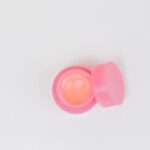Laser hair removal is a popular cosmetic procedure that utilizes concentrated beams of light to target and eliminate unwanted hair. The technology behind this method is based on the principle of selective photothermolysis, where the laser emits a specific wavelength of light that is absorbed by the pigment in the hair follicles. When the light is absorbed, it generates heat, which damages the follicle and inhibits future hair growth.
This process is effective for various skin types and hair colors, although it tends to work best on individuals with light skin and dark hair due to the contrast in pigmentation. As you consider laser hair removal, it’s essential to understand that the treatment is not a one-time solution. Hair grows in cycles, and the laser is most effective during the anagen phase, when the hair is actively growing.
This means that multiple sessions are typically required to achieve optimal results. The number of sessions you may need can vary based on factors such as your hair type, skin tone, and the area being treated. Generally, you can expect to undergo anywhere from six to eight treatments spaced several weeks apart to ensure that all hair follicles are effectively targeted.
Key Takeaways
- Laser hair removal works by targeting the pigment in hair follicles with a concentrated beam of light, which damages the follicle and inhibits future hair growth.
- Before laser hair removal, it’s important to avoid sun exposure and certain hair removal methods, and to shave the treatment area beforehand.
- During laser hair removal treatment, the technician will use a handheld device to deliver the laser pulses to the treatment area, which may cause a snapping or stinging sensation.
- After laser hair removal, it’s important to protect the treated skin from sun exposure and to avoid hot showers, saunas, and strenuous exercise for a few days.
- Side effects of laser hair removal may include redness, swelling, and irritation, which can be managed with cool compresses, aloe vera gel, and gentle skincare products.
Preparing for Laser Hair Removal: What to Expect
Before you embark on your laser hair removal journey, preparation is key to ensuring a successful outcome. Your first step will be to schedule a consultation with a qualified practitioner who specializes in laser treatments. During this initial meeting, you will discuss your medical history, skin type, and any medications you may be taking.
This information helps the practitioner determine if you are a suitable candidate for the procedure and what type of laser will be most effective for your needs. In the days leading up to your appointment, there are several important guidelines to follow. You should avoid sun exposure and tanning beds, as tanned skin can increase the risk of complications during treatment.
Additionally, refrain from waxing or plucking hair in the area to be treated for at least four weeks prior to your session. Shaving is usually recommended instead, as it allows the laser to target the hair follicle directly without interference from longer hair above the skin’s surface. By adhering to these preparatory steps, you can help ensure that your experience is as smooth and effective as possible.
The Laser Hair Removal Process: What Happens During Treatment

On the day of your laser hair removal appointment, you will arrive at the clinic ready for your treatment. After checking in, you will be taken to a private room where the procedure will take place. The practitioner will begin by cleaning the area to be treated and may apply a topical anesthetic to minimize any discomfort during the session.
While many people describe the sensation of the laser as similar to a rubber band snapping against the skin, numbing cream can help alleviate any potential pain. Once you are comfortable, the practitioner will use a handheld laser device to target the hair follicles in the designated area. You may be given protective eyewear to shield your eyes from the bright light emitted by the laser.
The duration of the treatment will depend on the size of the area being treated; smaller areas like the upper lip may take just a few minutes, while larger areas like the legs or back could take up to an hour or more. Throughout the process, you can communicate with your practitioner about any discomfort or concerns you may have, ensuring that you feel at ease during your session.
Post-Treatment Care: How to Take Care of Your Skin
| Post-Treatment Care | Recommendations |
|---|---|
| Cleansing | Gently cleanse the treated area with a mild, non-abrasive cleanser twice a day. |
| Moisturizing | Apply a gentle, non-comedogenic moisturizer to keep the skin hydrated. |
| Sun Protection | Avoid direct sun exposure and use a broad-spectrum sunscreen with SPF 30 or higher. |
| Avoiding Irritants | Avoid using harsh skincare products or treatments that may irritate the skin. |
| Follow-up Appointments | Attend all scheduled follow-up appointments with your dermatologist or skincare professional. |
After your laser hair removal treatment, proper post-care is crucial for achieving optimal results and maintaining healthy skin. Initially, you may notice some redness or swelling in the treated area, which is a normal reaction as your skin adjusts to the procedure. To soothe any discomfort, applying a cool compress can be beneficial.
Additionally, your practitioner may recommend using aloe vera gel or a gentle moisturizer to keep your skin hydrated and promote healing. It’s important to avoid sun exposure for at least two weeks following your treatment, as your skin will be more sensitive and susceptible to sunburn. If you must go outside, wearing sunscreen with a high SPF is essential to protect your skin from harmful UV rays.
You should also refrain from using harsh skincare products or engaging in activities that may irritate your skin, such as hot baths or vigorous exercise, for a few days post-treatment. By following these guidelines, you can help ensure that your skin heals properly and that you achieve the best possible results from your laser hair removal sessions.
Managing Side Effects: Dealing with Redness and Irritation
While many individuals experience minimal side effects after laser hair removal, some may encounter redness or irritation in the treated area.
However, if you find that redness persists or if you experience significant discomfort, it’s important to reach out to your practitioner for guidance.
They may suggest over-the-counter anti-inflammatory medications or topical treatments to alleviate any lingering irritation. In addition to redness, some people may experience minor swelling or bumps in the treated area. These side effects are generally mild and resolve on their own within a short period.
To help manage these symptoms, avoid scratching or picking at the area, as this can lead to further irritation or even infection. Instead, focus on keeping the area clean and moisturized while allowing your skin time to recover from the treatment.
Long-Term Results: What to Expect After Laser Hair Removal

Reduced Hair Growth
After completing a series of treatments, many individuals notice a significant reduction in hair growth in the treated areas. While some fine or light hairs may still remain, they are often much less noticeable and easier to manage than before.
Convenience and Confidence
In many cases, individuals find that they no longer need to shave or wax regularly, leading to greater convenience and confidence in their appearance. However, it’s important to keep in mind that results can vary from person to person based on factors such as hair type and hormonal changes.
Improved Quality of Life
Regardless of individual outcomes, many people find that laser hair removal significantly improves their quality of life by reducing the time and effort spent on traditional hair removal methods.
Maintenance and Follow-Up: Keeping Your Skin Smooth and Hair-Free
To maintain smooth and hair-free skin after completing your laser hair removal treatments, follow-up care is essential. Your practitioner will likely recommend scheduling periodic maintenance sessions every six months to a year, depending on your individual needs and how well your body responds to treatment. These touch-up sessions can help address any regrowth and ensure that you continue enjoying long-lasting results.
In addition to regular maintenance appointments, it’s important to continue practicing good skincare habits in between treatments. This includes keeping your skin moisturized and protected from sun exposure. If you notice any changes in your skin or hair growth patterns after treatment, don’t hesitate to reach out to your practitioner for advice on how best to proceed.
Alternatives to Laser Hair Removal: Exploring Other Hair Removal Options
While laser hair removal is an effective option for many individuals seeking long-term hair reduction, it’s not the only method available. If you’re considering alternatives, there are several other hair removal techniques worth exploring. Traditional methods such as shaving, waxing, and depilatory creams remain popular choices for those looking for immediate results without committing to a series of treatments.
For those seeking longer-lasting solutions without lasers, electrolysis is another option worth considering. This method involves using an electric current to destroy individual hair follicles and can be effective for all skin types and hair colors. However, electrolysis can be time-consuming since each follicle must be treated individually.
Ultimately, choosing the right hair removal method depends on your personal preferences, budget, and desired outcomes. By exploring all available options, you can make an informed decision that aligns with your needs and lifestyle.
If you are curious about what happens after laser hair removal, you may want to check out this article on inlaserhairremoval.com. This article provides valuable information on the post-treatment care and what to expect in terms of results. It is important to follow the recommended guidelines to ensure the best outcome and long-lasting effects of the procedure.
FAQs
What is laser hair removal?
Laser hair removal is a cosmetic procedure that uses a concentrated beam of light (laser) to remove unwanted hair. The laser targets the pigment in the hair follicles, damaging them and inhibiting future hair growth.
What happens after laser hair removal?
After laser hair removal, you may experience some redness and swelling in the treated area. The hair may appear to be growing back, but it is often shedding as a result of the treatment. Over the following weeks, the treated hair will fall out, leaving the skin smooth and hair-free.
How long does it take to see results after laser hair removal?
It typically takes 1-3 weeks to see the full results of laser hair removal. The treated hair will gradually shed over this time period, and you will notice a reduction in hair growth.
Is there any downtime after laser hair removal?
There is minimal downtime after laser hair removal. You may experience some redness and swelling immediately after the treatment, but this usually subsides within a few hours. You can resume your normal activities right after the procedure.
How many sessions of laser hair removal are needed for optimal results?
The number of sessions needed for optimal results varies depending on the individual and the area being treated. Most people require 6-8 sessions spaced 4-6 weeks apart to achieve the best results.
Are the results of laser hair removal permanent?
Laser hair removal can provide long-lasting hair reduction, but it is not always permanent. Some hair may eventually grow back, but it is typically finer and lighter in color. Periodic maintenance treatments may be needed to maintain the results.






